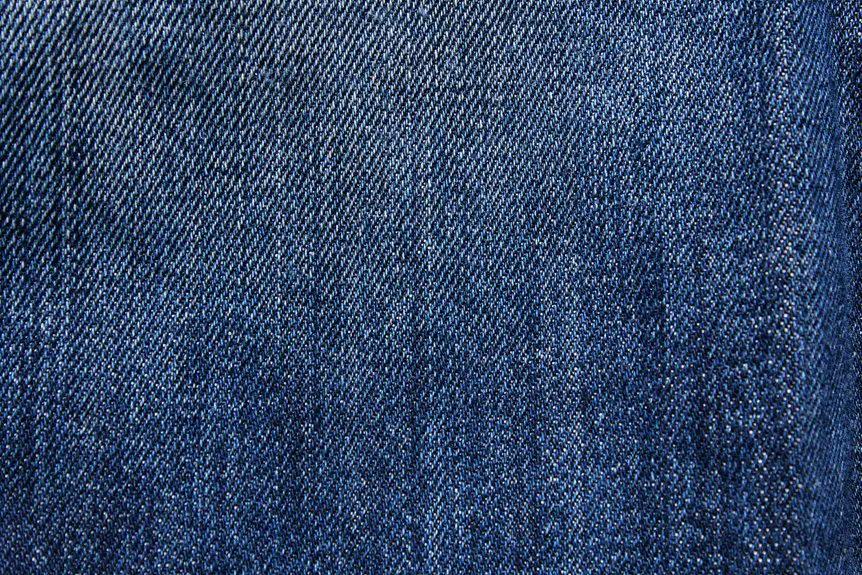When choosing between polyamide and rayon, know that polyamide is a strong, elastic synthetic fiber that dries quickly, making it great for durability and active wear. Rayon, made from natural cellulose, offers softer comfort and better breathability but is less durable and slower to dry. Polyamide traps heat more, while rayon feels cooler but requires delicate care. If you want to understand how these differences affect their uses and care, keep exploring the details ahead.
Table of Contents
Key Takeaways
- Polyamide is a fully synthetic fiber made from petrochemicals, while rayon is a semi-synthetic fiber derived from natural cellulose.
- Polyamide offers higher durability, elasticity, and quick drying, whereas rayon provides better breathability and a softer feel.
- Polyamide traps heat and moisture, making it less breathable, while rayon allows better air circulation but is weaker when wet.
- Polyamide has a larger environmental footprint and microplastic concerns, whereas rayon is biodegradable but involves chemical processing and deforestation.
- Polyamide is generally more expensive but longer-lasting, while rayon is cheaper but less durable and requires delicate care.
Origins and Production Processes
Although both polyamide and rayon are widely used in textiles, their origins and production processes differ greatly.
Polyamide and rayon are both common textiles, but their origins and manufacturing methods are distinctly different.
You’ll find polyamide is a synthetic fiber, created through a chemical reaction involving petroleum-based compounds. Manufacturers polymerize these compounds to form long chains, which are then spun into fibers.
On the other hand, rayon is a semi-synthetic fiber derived from natural cellulose, usually sourced from wood pulp. You’ll notice rayon undergoes a chemical treatment to convert the cellulose into a soluble compound, which is then regenerated into fibers through a spinning process.
While polyamide relies heavily on petrochemicals and synthetic polymerization, rayon’s production bridges natural raw materials with chemical processing, giving it a unique status between natural and synthetic fibers in the textile industry.
Physical and Chemical Properties
When comparing polyamide and rayon, you’ll notice a clear difference in fiber strength—polyamide is much tougher.
You’ll also spot how each fabric handles moisture differently, with rayon absorbing more water than polyamide.
Understanding these traits helps you choose the right material for your needs.
Fiber Strength Comparison
Since you rely on fiber strength for durability and performance, comparing the physical and chemical properties of polyamide and rayon is essential.
Polyamide, commonly known as nylon, boasts high tensile strength and excellent elasticity, making it resistant to wear and tear. Its chemical structure allows it to withstand stress without breaking, so it performs well under mechanical strain.
Rayon, on the other hand, is a semi-synthetic fiber derived from cellulose with moderate strength but less elasticity. It’s more prone to weakening when wet and can lose integrity faster under tension.
If you need a fiber that maintains strength in demanding conditions, polyamide is the better choice. Rayon suits lighter applications where softness matters more than long-lasting strength.
Understanding these differences helps you pick the right fiber for your needs.
Moisture Absorption Traits
Beyond strength, how fibers handle moisture plays a big role in their performance and comfort.
When you choose polyamide, you get a fiber that absorbs very little moisture—usually less than 5%. This means it dries quickly and retains its shape, keeping you comfortable during active use.
On the other hand, rayon absorbs moisture readily, soaking up around 11-13%. That makes rayon feel softer and cooler against your skin but also means it takes longer to dry and can lose strength when wet.
So, if you want moisture-wicking properties and durability in damp conditions, polyamide is your go-to.
But if you prioritize breathability and softness in dry settings, rayon might suit you better.
Understanding these traits helps you pick the right fiber for your needs.
Comfort and Breathability
Comfort and breathability play an essential role in how you experience fabrics like polyamide and rayon.
When you wear polyamide, you might notice it feels smooth and lightweight, but it tends to trap heat and moisture against your skin, which can reduce breathability.
On the other hand, rayon offers excellent breathability thanks to its natural cellulose fibers, allowing air to circulate and moisture to evaporate more easily. This makes rayon a great choice if you’re looking for a fabric that keeps you cool and comfortable, especially in warm weather.
However, rayon can feel softer and more breathable, while polyamide often provides a snug fit but may feel less airy during extended wear.
Understanding this difference helps you choose the fabric that suits your comfort needs best.
Durability and Strength
While both polyamide and rayon offer unique benefits, their durability and strength differ considerably, affecting how long your garments last.
Polyamide, also known as nylon, is a synthetic fiber renowned for its high tensile strength and resistance to abrasion. This means your polyamide clothes can handle frequent wear and washing without losing shape or tearing easily.
On the other hand, rayon is a semi-synthetic fiber made from natural cellulose, which makes it less durable and more prone to weakening when wet. You’ll find that rayon garments require more delicate care, as they can stretch or rip under stress.
If durability is a top priority, polyamide will serve you better, especially for activewear or items exposed to rough conditions.
Environmental Impact and Sustainability
Because polyamide is a fully synthetic fiber derived from petrochemicals, it has a significant environmental footprint, including high energy consumption and non-biodegradability. When you choose polyamide, you’re opting for a material that can take hundreds of years to break down, contributing to microplastic pollution.
Polyamide’s synthetic nature leads to high energy use and long-lasting microplastic pollution in the environment.
On the other hand, rayon comes from natural cellulose, usually wood pulp, which makes it more biodegradable. However, you should be aware that rayon’s production often involves harsh chemicals and deforestation, impacting ecosystems and water quality.
If sustainability matters to you, consider certified eco-friendly rayon options, such as those made with the Forest Stewardship Council (FSC) label or produced via closed-loop processes.
Ultimately, your choice hinges on balancing durability, environmental impact, and responsible sourcing.
Common Uses and Applications
Both polyamide and rayon serve a variety of functions in your everyday life, from clothing to home textiles. You’ll find polyamide, often known as nylon, in activewear and swimwear due to its strength and elasticity. Rayon, with its soft texture, suits casual wear and bedding.
Each fiber’s unique traits guide their applications:
- Polyamide is common in sports apparel, outdoor gear, lingerie, and industrial fabrics.
- Rayon appears in blouses, dresses, curtains, and upholstery.
- Polyamide’s durability makes it ideal for backpacks and tents.
- Rayon’s breathability enhances comfort in warm climates and soft furnishings.
Care and Maintenance Tips
Knowing how polyamide and rayon are commonly used helps you understand why their care differs. Polyamide, being a durable synthetic fiber, handles washing and drying well, while rayon, a semi-synthetic fabric, requires gentler treatment to maintain its softness and shape.
| Fabric | Washing Instructions | Drying Method |
|---|---|---|
| Polyamide | Machine wash cold | Tumble dry low or air dry |
| Rayon | Hand wash or gentle cycle | Lay flat or hang to dry |
When you care for polyamide, you can be more flexible with washing and drying, but avoid high heat to prevent damage. For rayon, you need to be cautious—always use mild detergent and avoid wringing to keep it looking its best. Following these tips will help your garments last longer.
Cost and Availability Comparison
When choosing between polyamide and rayon, you’ll want to contemplate their price differences and how easily you can find them on the market.
Production costs play a big role in why one might be more affordable or accessible than the other.
Let’s take a closer look at these factors to help you make the best choice.
Price Differences Overview
Price plays an essential role in choosing between polyamide and rayon for your projects. Understanding their price differences can help you make a smarter buy without compromising quality.
Generally, polyamide tends to be more expensive due to its synthetic manufacturing process, while rayon is often cheaper as it’s semi-synthetic, derived from natural fibers.
Here’s what to ponder about their price differences:
- Polyamide’s cost reflects its durability and resistance.
- Rayon offers a budget-friendly option with a softer feel.
- Bulk purchases of rayon can greatly lower expenses.
- Polyamide’s higher price may justify longer-lasting use.
Knowing these points helps you balance cost with performance effectively.
Market Availability Status
Understanding how polyamide and rayon differ in cost sets the stage for examining their market availability.
When you shop for polyamide, you’ll find it widely accessible because it’s a synthetic fiber produced on a large scale, making it readily stocked by many suppliers.
Rayon, being semi-synthetic and derived from natural cellulose, also enjoys broad availability but can vary in supply depending on the manufacturing region and demand fluctuations.
You’ll notice polyamide products often come with consistent pricing and steady availability, especially in activewear and outdoor gear markets.
Rayon, meanwhile, might be more seasonal or limited in certain regions, influencing its cost and availability.
Production Cost Factors
Because polyamide is fully synthetic, its production relies heavily on petrochemicals and energy-intensive processes, which can drive costs but also guarantee consistent manufacturing efficiency.
On the other hand, rayon, being semi-synthetic and derived from cellulose, involves chemical treatments that can fluctuate in cost based on raw material availability.
When considering production cost factors, keep these points in mind:
- Polyamide’s reliance on oil prices can increase costs during market volatility.
- Rayon’s raw materials—wood pulp or cotton linters—depend on agricultural supply chains.
- Energy consumption for polyamide is typically higher but more controlled.
- Rayon production may require more water and chemicals, impacting environmental compliance costs.
Understanding these factors helps you choose the fabric that fits your budget and sustainability goals.
Frequently Asked Questions
Can Polyamide and Rayon Be Blended Together in Fabrics?
You can definitely blend polyamide and rayon in fabrics. Doing so combines polyamide’s strength with rayon’s softness, creating durable, comfortable textiles. You’ll find these blends offer great versatility and enhanced performance for various clothing applications.
How Do Polyamide and Rayon React to Dyeing Processes?
You’ll find polyamide absorbs dyes well, especially acid and disperse dyes, resulting in vibrant colors. Rayon takes dye easily too, producing bright, rich hues. Both fibers respond differently, so choose dyes suited to each for best results.
Are There Health Concerns Associated With Wearing Polyamide or Rayon?
Imagine you notice skin irritation after wearing a synthetic jacket. You’ll want to know that polyamide can cause allergies for sensitive skin, while rayon, being more breathable, generally poses fewer health concerns but may still irritate some.
Which Fiber Is Better for Athletic Wear, Polyamide or Rayon?
You’ll find polyamide better for athletic wear because it’s durable, moisture-wicking, and dries quickly. Rayon feels soft but absorbs moisture, making it less ideal when you need breathability and quick drying during workouts.
How Do Polyamide and Rayon Fibers Behave When Exposed to UV Light?
When you’re watching wear under wicked sunlight, polyamide performs pretty well, proving its resistance to UV rays. Rayon, however, tends to fade faster, feeling fragile and frail when frequently facing fierce UV exposure.
- Does Chiffon Fabric Stink - July 15, 2025
- Does Chiffon Fabric Affect the Economy - July 15, 2025
- Does Cotton Fabric Have a Nap - July 15, 2025







